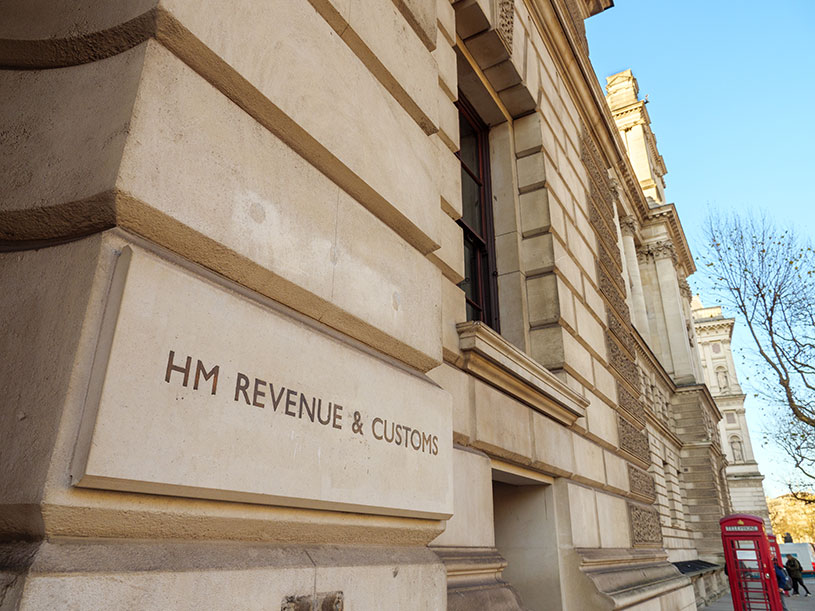Helping small businesses save time on tax admin and freeing up their time for growth is a key focus of HMRC’s new transformation roadmap.
Following strong recommendations from the government to improve its service to taxpayers, these plans set out how HMRC will be developing over the next few years.
It’s hoped these changes will mean at least 90 per cent of customer interactions with HMRC are digital by 2030.
Key points: at a glance
- no plans for Making Tax Digital for corporation tax
- e-invoicing and pre-populated tax forms
- replacing Government Gateway user IDs
- training and AI digital assistants
- a new digital reporting service for side hustles
- clamping down on fraudulent umbrella companies
1. No plans for Making Tax Digital for corporation tax
Making Tax Digital won’t be extended to corporation tax, the HMRC roadmap has confirmed. In what was previously unclear, this latest announcement instead says HMRC will focus on updating internal systems to improve corporation tax compliance.
Making Tax Digital is already in place for VAT and is being further rolled out for income tax from April 2026.
The government has also already confirmed that Making Tax Digital will apply to those with an annual income of more than £20,000 by April 2028. And it’s now looking into how to introduce the digital tax system for businesses and landlords with income lower than £20,000.
2. E-invoicing and pre-populated tax forms
HMRC is upgrading digital systems and technology to help make it easier for small businesses to file tax returns and reduce the chance for errors and mistakes.
Proposed changes and developments include:
- expanding the use of e-invoicing, following a consultation which closed in May 2025
- pre-populated tax returns
- targeted nudges to help people submit their Self Assessment in 2026 and 2027
- data-driven nudges to help corporation taxpayers comply with their tax responsibilities
- automatically registering people for Self Assessment
3. Replacing Government Gateway user IDs
A new GOV.UK One Login will be phased in and will eventually replace Government Gateway to simplify how people sign into different government services.
This move will take place between 2026 and 2027 and hopes to streamline how you prove your identity and sign in to different services.
As part of this, a new wallet feature will enable small businesses to store government documents on their phones.
4. Training and AI digital assistants
HMRC plans to develop educational tax support packages specifically for small businesses during 2025 and 2026.
It also hopes to invest in AI-powered digital assistants and offer a new, personalised customer relationship management system by 2026.
5. A new digital reporting service for side hustles
As the new tax-free allowance threshold is set to increase from £1,000 to £3,000 by the end of 2029, HMRC is introducing a new digital reporting service for those earning below this amount.
This system could apply to people with a self-employed income of less than £3,000, so is likely to include anyone running a side hustle.
HMRC says it hopes to introduce this service within this Parliament (which is set to be no later than August 2029).
6. Clamping down on fraudulent umbrella companies
New legislation will come into effect from April 2026 to tackle tax avoidance and fraud by umbrella companies.
HMRC says it will be publishing draft legislation in July 2025, to become law in 2026.
James Murray MP, Exchequer Secretary to the Treasury, said: “By 2030, taxpayers can expect a modern and innovative HMRC with cutting-edge AI, industry-leading customer service practices, and a laser focus on delivering taxpayer value for money by ensuring everyone pays their fair share.”
Other changes
- increasing the interest rate for late payment penalties – this was introduced on 6 April 2025 but has been reiterated in the report
- further reforms of the tax penalty system are expected later in 2025
- a new online service for all PAYE taxpayers is being phased in during 2025-2026, and HMRC plans to improve how PAYE taxpayers claim expenses
- it’s now possible to add your National Insurance number to Apple/Google Wallet
- a new ‘check your state pension forecast’ tool lets you check how much you’ll get and when
- introducing SMS confirmations for Self Assessment appeals, complaints, and some PAYE services
- pre-populating Self Assessment tax returns with child benefit data from April 2026
- digitalising the inheritance tax service from 2027-2028 tax year
- making tax refunds more accessible by sending them directly to bank accounts
The roadmap also emphasises the importance of AI and how third-party tools and software will be increasingly useful for small business owners when it comes to their tax reporting. For example, AI tools can already help remove the manual task of recording sales and purchases. And accounting software can automatically capture sales and fees and apply the correct VAT rates.
Read the HMRC transformation roadmap in full.
Tax is a complex subject so if you’re unsure of anything it’s best to speak to an accountant or get professional financial advice.
Tax guides for small businesses
- Companies House identity verification launch – are you ready?
- Fair Payment Code – is it helping small businesses
- The 8 best self-employed accounting software for 2025
- Small business tax changes: new thresholds, rates, and allowances
